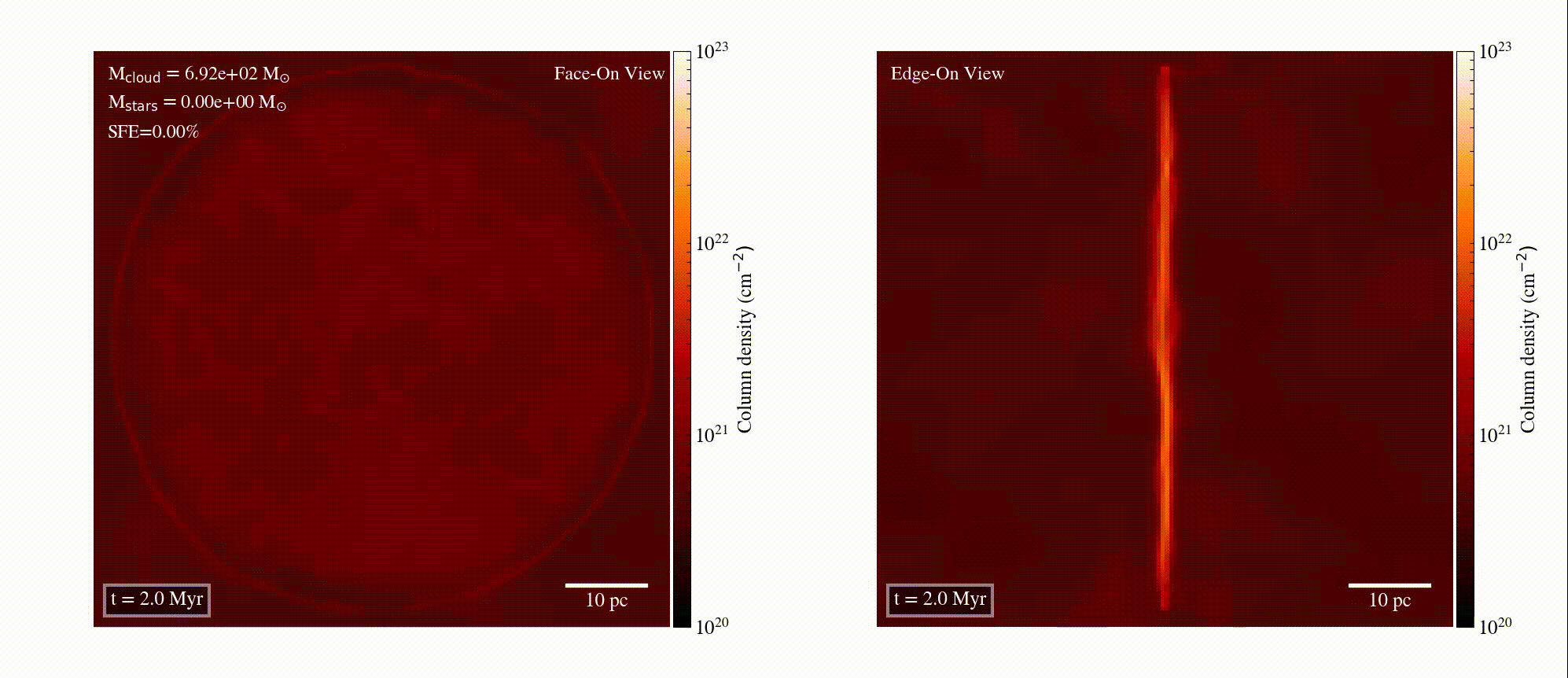DGAPA-PAPIIT IN104319
En este proyecto proponemos investigar la formación de cúmulos y asociaciones estelares, con énfasis en 1) hacer estudios multi-escala que permitan cuantificar las diferencias y semejanzas entre nubes que forman problaciones estelares gravitacionalmente ligadas (cúmulos) y no ligadas (asociaciones); 2) entender el flujo (acreción y retroalimentación) de gas desde las escalas de nubes moleculares completas (100 pc) hasta las escalas de discos protoplanetarios individuales (0.001 pc). Nuestra metodología incluye novedosas técnicas para la combinación de telescopios en tierra y espaciales, así como su modelaje e interpretación usando modelos analíticos e hidrodinámicos acoplados a cálculos de transferencia radiativa.
 The PhyISM (Physics of the InterStellar Medium) group focuses on understanding the Star Formation (SF) process from both the theoretical and observational points of view. We use state-of-the-art numerical simulations combined with analytical models to study the role of different physical mechanisms (self-gravity, magnetic fields, feedback, etc) to explain how stars form in Molecular Clouds and confront our results with multiwavelength observations. From these models and comparisons, we have recently put forward the new SF scenario known as "Global Hierarchical Collapse", in which gravity is the main agent driving the SF activity, and controls the dynamics and structure formation, as well as the structure of nascent clusters within the clouds, by means of a chaotic regime of collapses within collapses.
The PhyISM (Physics of the InterStellar Medium) group focuses on understanding the Star Formation (SF) process from both the theoretical and observational points of view. We use state-of-the-art numerical simulations combined with analytical models to study the role of different physical mechanisms (self-gravity, magnetic fields, feedback, etc) to explain how stars form in Molecular Clouds and confront our results with multiwavelength observations. From these models and comparisons, we have recently put forward the new SF scenario known as "Global Hierarchical Collapse", in which gravity is the main agent driving the SF activity, and controls the dynamics and structure formation, as well as the structure of nascent clusters within the clouds, by means of a chaotic regime of collapses within collapses.